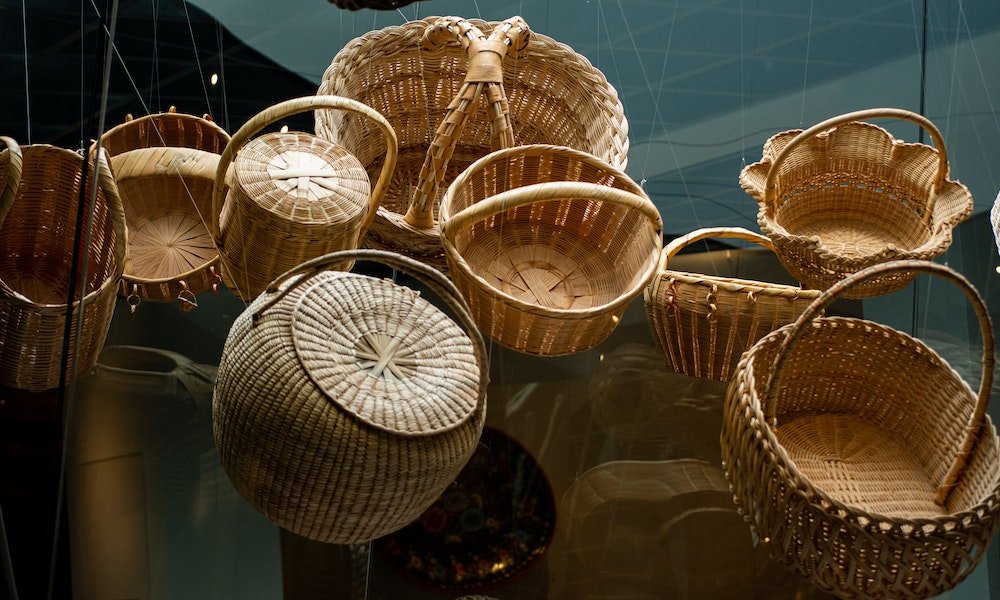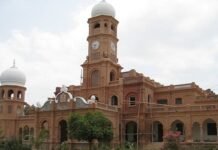Multan’s Handicrafts, Multan, the city known as the “City of Sufis” and the “Mango Capital of Pakistan,” holds another remarkable distinction – it is a treasure trove of traditional artistry. The city’s rich cultural heritage is reflected in its vibrant and intricate handicrafts, which have been passed down through generations. From Blue Pottery to Camel Skin Art, Multan’s handicrafts offer a glimpse into the skilled craftsmanship and artistic traditions that have flourished in the region for centuries.
Multan’s Handicrafts, Multan, located in the province of Punjab in Pakistan, is a city steeped in history and known for its deep-rooted cultural traditions. Its handicrafts are a testament to the creativity and artistic skills of its people, who have meticulously preserved these crafts over the years. In this article, we will explore the diverse range of handicrafts that Multan has to offer and delve into the historical significance, cultural value, and challenges faced by the local artisans.
Read More: “Multan’s Sufi Trails: Exploring the Mystical Side of the City”
Table of Contents
- 1 Multan: A city rich in cultural heritage
- 2 Historical significance of Multan’s handicrafts
- 3 Traditional crafts of Multan
- 4 Multan’s Handicrafts: A reflection of Pakistani culture
- 5 Impact of globalization on Multan’s handicraft industry
- 6 Preservation and promotion of Multan’s handicrafts
- 7 Future prospects and challenges for Multan’s handicraft industry
- 8 Multan’s Handicrafts, Conclusion
- 9 Frequently Asked Questions (FAQs)
Multan: A city rich in cultural heritage
Multan’s Handicrafts, Multan is one of the oldest cities in South Asia, with a history dating back over 6,000 years. It has witnessed the rise and fall of numerous civilizations, including the Indus Valley Civilization, the Mauryan Empire, the Ghaznavids, the Mughals, and the British Raj. This rich historical background has contributed to the city’s diverse cultural fabric and serves as a foundation for its unique handicrafts.

Historical significance of Multan’s handicrafts
Multan’s Handicrafts, The handicrafts of Multan have a deep-rooted historical significance. These crafts have been nurtured and refined by artisans who have inherited the skills and techniques from their ancestors. The artistry found in Multan’s handicrafts is a living testament to the city’s past glory and the resilience of its people.
Traditional crafts of Multan
1. Blue Pottery
Multan’s Handicrafts, Blue Pottery is one of the most renowned handicrafts of Multan. It is characterized by its distinctive blue and white designs on earthenware. The craft involves shaping the clay, applying intricate patterns, and then firing it in a kiln. The vibrant colors and intricate motifs make Blue Pottery a favorite among art enthusiasts and collectors.
2. Camel Skin Art
Camel Skin Art is another remarkable craft that showcases the exceptional skills of Multan’s artisans. The art involves intricate painting on camel skin, creating beautiful and durable pieces such as lampshades, trays, and wall hangings. The motifs often depict traditional themes and local folklore, making each piece a unique work of art.
3. Embroidery and Appliqué Work
Multan’s Handicrafts, Embroidery and Appliqué Work are traditional crafts that Multan takes pride in. Skilled artisans intricately stitch vibrant threads onto fabrics, creating intricate designs and patterns. The appliqué technique involves cutting and sewing different fabrics together to form decorative motifs. These crafts are commonly seen in garments, home decor items, and accessories.
4. Woodwork and Lacquer Art
Woodwork and Lacquer Art are highly esteemed crafts in Multan. Skilled woodworkers carve intricate designs on furniture, doors, and decorative pieces. The lacquer art technique involves applying vibrant colors and lacquer on wood to enhance its beauty. The resulting pieces showcase the exquisite craftsmanship and attention to detail of Multan’s artisans.
5. Khussa Making
Multan’s Handicrafts, Khussa Making is an age-old craft that involves making handmade leather shoes adorned with intricate embroidery, beads, and sequins. Multani Khussas are highly regarded for their comfort, durability, and elegant designs. The craft has been passed down through generations, and local artisans continue to create these beautiful traditional footwear.
6. Pottery and Ceramics
Pottery and Ceramics have a long-standing tradition in Multan. Artisans skillfully shape clay into various forms, such as pots, vases, and bowls, and decorate them with intricate patterns and motifs. The pottery of Multan reflects the region’s cultural heritage and is cherished for its aesthetic appeal.
Multan’s Handicrafts: A reflection of Pakistani culture
Multan’s Handicrafts, Multan’s handicrafts are not only a representation of the city’s heritage but also an embodiment of Pakistani culture. The artistry and craftsmanship exhibited in these crafts highlight the diversity and creativity that are deeply ingrained in the country’s cultural tapestry. From the intricate motifs to the vibrant colors, each piece tells a story and serves as a testament to the artistic traditions that have been nurtured over centuries.

Impact of globalization on Multan’s handicraft industry
Multan’s Handicrafts, Globalization has brought both opportunities and challenges for Multan’s handicraft industry. On one hand, it has opened up new markets and expanded the reach of these crafts beyond national borders. However, it has also posed threats to the traditional artisans, as mass-produced and cheaper alternatives flood the market. Balancing the preservation of traditional techniques with the demands of a globalized economy is a constant challenge faced by Multan’s craftsmen.
Preservation and promotion of Multan’s handicrafts
Multan’s Handicrafts, Efforts are being made to preserve and promote Multan’s handicrafts both at the governmental and non-governmental levels. The government has initiated various programs to support and empower local artisans, providing them with training, financial assistance, and opportunities to showcase their crafts. Non-governmental organizations have also played a crucial role in preserving traditional techniques and providing platforms for artisans to market their products. Furthermore, the emergence of online platforms and e-commerce has opened up new avenues for artisans to reach a wider audience and promote their crafts globally.
Future prospects and challenges for Multan’s handicraft industry
Multan’s Handicrafts, The future of Multan’s handicraft industry holds both promise and challenges. While there is a growing appreciation for traditional crafts and a demand for unique, handmade products, the industry still faces hurdles in terms of market competition, access to resources, and skill transfer to the younger generation. However, with continued support, innovation, and a collective effort to preserve these crafts, Multan’s handicraft industry can thrive and continue to contribute to the cultural and economic landscape of the region.
Multan’s Handicrafts, Conclusion
Multan’s handicrafts are a testament to the city’s rich cultural heritage and the artistic prowess of its people. The diverse range of crafts, from Blue Pottery to Khussa Making, showcases the depth and vibrancy of Multan’s artistry. These handicrafts not only reflect the city’s past glory but also contribute to the cultural identity of Pakistan. It is essential to support and preserve these crafts, ensuring their continued existence for future generations to appreciate and enjoy.

Read More: “Multan’s Ancient Fort: Witnessing the Magnificence of Qila Multan”
Frequently Asked Questions (FAQs)
Where can I buy Multan’s handicrafts?
Multan’s handicrafts can be purchased from local markets, craft fairs, and specialized handicraft stores in Multan. Additionally, many online platforms showcase and sell these crafts, allowing people from all around the world to access and appreciate them.
Are Multan’s handicrafts expensive?
The price of Multan’s handicrafts can vary depending on the intricacy of the craftsmanship, materials used, and the specific item. While some pieces may be more affordable, others, especially those crafted by renowned artisans or featuring intricate designs, may have a higher price tag.
Can I learn Multan’s handicraft techniques?
Yes, there are opportunities to learn Multan’s handicraft techniques. Several institutes and organizations offer workshops and training programs where you can learn from skilled artisans. These programs aim to pass on the traditional techniques to future generations and promote the sustainability of these crafts.
How can I support the preservation of Multan’s handicrafts?
You can support the preservation of Multan’s handicrafts by purchasing authentic handmade products directly from local artisans or reputable craft organizations. By doing so, you contribute to the livelihoods of artisans and encourage the continuation of these traditional crafts.
Are Multan’s handicrafts only limited to traditional designs?
While traditional designs are prominent in Multan’s handicrafts, contemporary adaptations and modern influences have also emerged. Many artisans incorporate innovative elements and experiment with new designs, allowing the crafts to evolve while still honoring their roots.






















